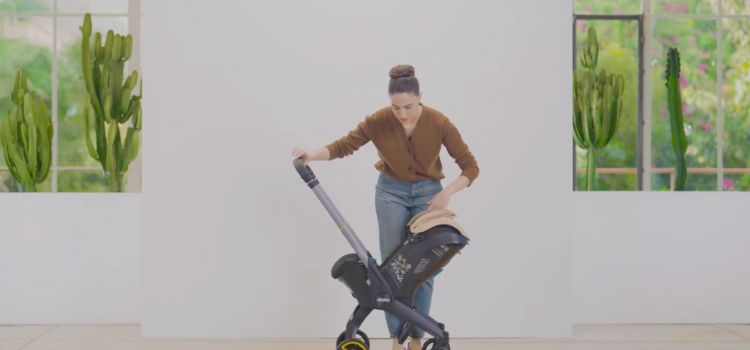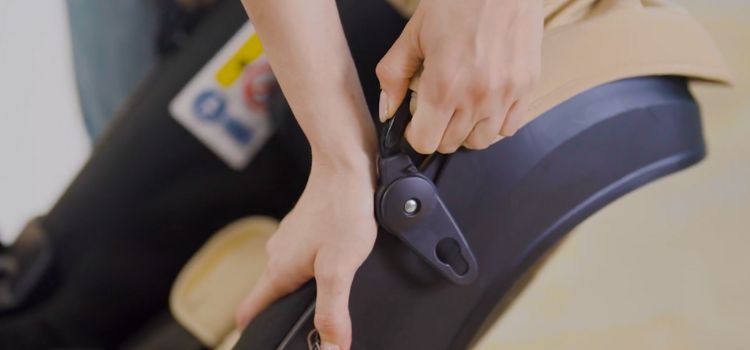As an Amazon Associate, I earn from qualifying purchases
Shoulder pads on car seats are designed to provide extra support and comfort, especially for long drives. However, there comes a time when it’s necessary to remove them, such as when they become worn out or damaged or if they interfere with the proper fit of the seat belt. It’s important to know when to remove shoulder pads from a car seat to ensure the driver’s and passengers’ safety. In this post, we’ll discuss the signs that indicate it’s time to remove shoulder pads from a car seat and provide guidance on how to do so effectively.
Determine the age and size of the child using the car seat.

It is essential to determine the age and size of the child using the car seat to ensure their safety. Different car seats are designed for specific age ranges and weight limits, so following the manufacturer’s guidelines and recommendations is crucial.
For infants, rear-facing car seats are suitable for their size and age. As the child grows, they may transition to a forward-facing car seat and eventually a booster seat. It’s essential to regularly check the height and weight limits of the car seat to ensure that it still fits the child correctly.
Additionally, always refer to the car seat manual for specific instructions on adjusting the seat as the child grows. By determining the age and size of the child using the car seat, you can ensure that they are adequately protected while traveling in a vehicle.
Check the manufacturer’s guidelines for the car seat.

It is crucial to check the manufacturer’s guidelines for car seats to ensure your child’s safety. Car seats are designed for specific age ranges and weight limits. Hence, it’s essential to follow the recommendations provided by the manufacturer.
For infants, rear-facing car seats are designed to accommodate their size and age, while as the child grows, they may transition to a forward-facing car seat and eventually a booster seat. It’s essential to regularly check the height and weight limits of the car seat to ensure that it still fits the child correctly.
Refer to the car seat manual for specific instructions on adjusting the seat as the child grows. Following the manufacturer’s guidelines, you can ensure your child is adequately protected while traveling in a vehicle.
Ensure that the shoulder pads are not interfering with the proper fit of the harness.

When using a car seat, it is essential to ensure that the shoulder pads are not interfering with the proper fit of the harness. This is crucial for the safety of the child in the event of a car accident. The shoulder pads should not be so thick that they prevent the harness from fitting snugly against the child’s body.
If the shoulder pads are interfering with the proper fit of the harness, you may need to adjust the position of the pads or consider using a different car seat. Refer to the car seat manual for specific instructions on changing the shoulder pads and harness for the best fit.
By ensuring that the shoulder pads do not interfere with the proper fit of the harness, you can help keep your child safe while traveling in a vehicle.
Consider the comfort and safety of the child.
It is essential always to prioritize the comfort and safety of your child, especially when traveling in a vehicle. Following the manufacturer’s guidelines is crucial to ensure your child is adequately protected when using a car seat. One important aspect to consider is the fit of the harness and shoulder pads.
The shoulder pads should not be so thick that they interfere with the proper fit of the harness against the child’s body. This can impact the car seat’s effectiveness in the event of a car accident. It’s essential to refer to the car seat manual for specific instructions on adjusting the shoulder pads and harness for the best fit.
Ensuring that the shoulder pads do not interfere with the harness, you can help keep your child safe and comfortable while traveling in a vehicle. Always prioritize the comfort and safety of your child when it comes to using car seats.
Remove the shoulder pads if they are no longer necessary or causing discomfort for the child.
It’s essential to ensure that the shoulder pads on a car seat do not interfere with the proper fit of the harness against the child’s body. If the shoulder pads are too thick, they can impact the car seat’s effectiveness in the event of a car accident.
Refer to the car seat manual for specific instructions on adjusting the shoulder pads and harness for the best fit. Prioritize the comfort and safety of your child by removing the shoulder pads if they are no longer necessary or causing discomfort. This will help ensure your child is adequately protected while traveling in a vehicle.
Conclusion
It’s essential to remove shoulder pads from a car seat when they no longer fit properly or interfere with the proper use of the seat. This could be due to the child outgrowing the shoulder pads or if they are causing the harness to fit incorrectly. It’s crucial to follow the manufacturer’s guidelines and recommendations for when to remove shoulder pads from a car seat to ensure the safety and effectiveness of the seat.
As an Amazon Associate, I earn from qualifying purchases
Leave a Reply